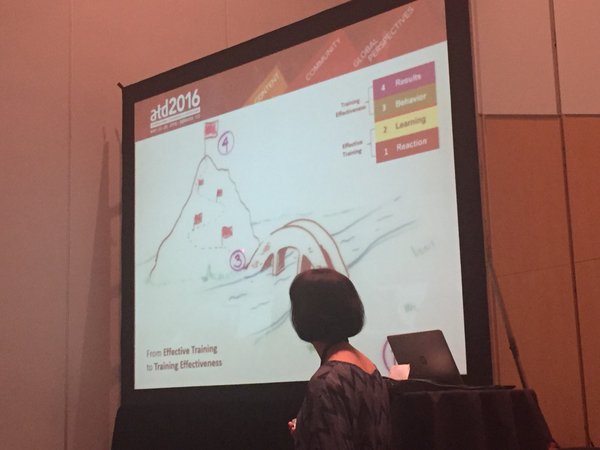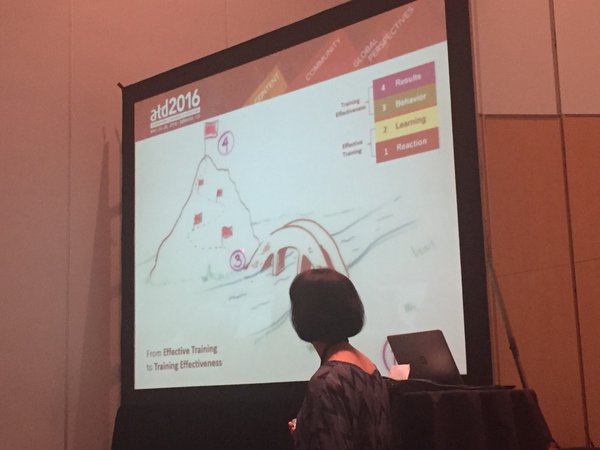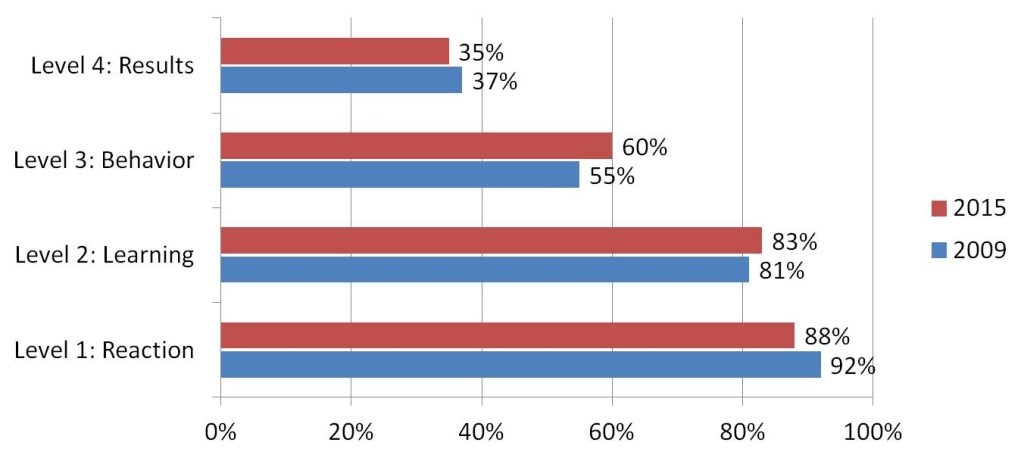State of Training Evaluation: How Are We Really Doing?

Back from a busy week at ATD 2016 in Denver, I am reflecting on the experience and thinking, “How are we really doing in terms of showing the value of our training to stakeholders?” Here are my impressions, combined with data from a recently released report.
On the positive side, there is tremendous interest in showing the business or organizational value of training. Hundreds of people attended the Kirkpatrick concurrent sessions to learn about how to “get to Kirkpatrick Levels 3 and 4” and how to build a better reaction sheet. Participation was lively; these topics clearly resonate with training professionals.
Many people approached me and shared that they have only really accomplished evaluation at Levels 1 and 2; their goal is Levels 3 and 4. Karen, a training manager for a large U.S. corporation, said, “This is the year when I am going to get beyond training. We have selected a pilot program and we are working with supervisors to build a performance support plan. We split up the workload so that we each have to do a little bit to encourage the training graduates to use the new system, which will be installed in August. The usage rates and key metrics will be reported on a dashboard that everyone can view on the company intranet site. I am so excited that we are finally doing this!”
But how are we REALLY doing?

ATD recently published a report called Evaluating Learning: Getting to Measurements That Matter. Within the report, they compared and contrasted the evaluation results of respondents to the 2009 Value of Evaluation Report. Unfortunately, the findings are nearly identical. The reality is that the positive thoughts and small efforts towards showing the true business value of training are not moving the needle globally.

So, what do we need to do?
As an industry, it is critical that we follow Karen’s lead, and create and demonstrate training value by extending our role into the workplace, taking an active part in ensuring that what is learned gets applied on the job. From there, we need to track the intended outcomes and report the findings. If the training is not contributing to key organizational outcomes, then analysis should be performed to understand what needs to change.
I believe most of us know this, as evidenced by the conference book sale record set by the soft launch of our new book, Kirkpatrick’s Four Levels of Training Evaluation. The book is not available for sale until October, so in the meantime, see our list of Additional Resources below to brush up on how to get to Levels 3 and 4.
Don’t Miss a Feature
Register with us to receive Kirkpatrick Quick Tips delivered to your inbox.
Additional Resources:
Kirkpatrick Four Levels® Evaluation Certification Program – Bronze Level





